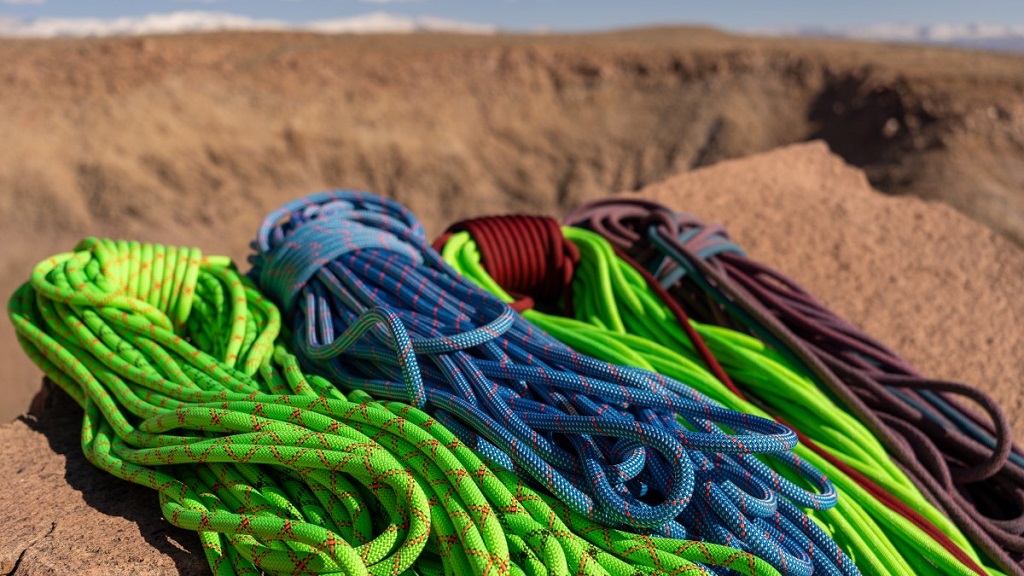Have you ever found yourself hanging by a thread, quite literally? Well, if you’re a rock climber, you know that feeling all too well. But fret not! I’m here to unravel the mystery behind climbing ropes and answer that burning question: How long do climbing ropes last?
Picture this: You’re high up on a rock face, your heart racing, palms sweating, and the only thing standing between you and a bone-rattling fall is your trusty climbing rope. In the world of climbing, the rope is your lifeline, your safety net, and your partner in crime. But like any trusty sidekick, it has a limited lifespan. So, let’s dive into the nitty-gritty of climbing ropes and find out when it’s time to bid adieu to your faithful companion.
The Basics of Climbing Ropes
Before we get into the longevity of climbing ropes, let’s start with the basics. Climbing ropes come in various types, but the most common ones are dynamic ropes. These ropes are designed to stretch, providing a cushioning effect when a climber falls. This stretchiness is what makes them so vital for your safety. Imagine jumping off a cliff with a rigid rope – not a pleasant thought, right?
If you’re in the market for a climbing rope, it’s important to know what makes a quality rope. Dynamic ropes typically consist of a core and a sheath. The core, typically made of nylon, provides the rope’s stretch, which is key for shock absorption in case of a fall. Meanwhile, the sheath, made of a sturdier material, safeguards the core from damage and abrasion. To find the best climbing rope for your needs, consider factors such as diameter, length, and type. Check out a quick climbing rope buying guide to make the process even easier!
The Climbing Rope Lifecycle
Alright, let’s get to the heart of the matter: How long do climbing ropes last? Well, the answer isn’t as straightforward as you might think. The lifespan of a climbing rope depends on a variety of factors, including usage, care, and type of climbing. Think of it like taking care of your favorite pair of sneakers. If you wear them daily for hiking through rough terrain, they won’t last as long as if you only wear them for casual strolls in the park.
1. Frequency of Use
One of the most significant factors affecting a climbing rope’s lifespan is how often you use it. If you’re an avid climber hitting the rocks every weekend, your rope will wear out faster than if you’re an occasional climber who dusts off their gear once in a blue moon. Frequent use causes more wear and tear, particularly on the sheath of the rope.
2. Type of Climbing
Different types of climbing put varying levels of stress on your rope. For instance, indoor climbing walls are less abrasive than outdoor natural rock faces. Climbing indoors will generally extend the life of your rope compared to outdoor climbing. Additionally, lead climbing, where you’re clipping the rope into quickdraws as you ascend, can put more strain on the rope than top-roping, where the rope is already in place.
3. Proper Storage
How you store your climbing rope matters too. Leaving it out in the sun or exposing it to harsh weather conditions can degrade the materials and reduce its lifespan. It’s like leaving your favorite book out in the rain – not a great idea if you want it to last.
4. Care and Maintenance
Taking care of your climbing rope is paramount. Regularly inspect it for signs of wear, such as fraying, cuts, or worn spots. If you spot any issues, it might be time to retire your rope. Cleaning your rope with mild soap and water can also help extend its life.
5. Falls and Impact
Every time you take a fall while climbing, your rope absorbs some of the shock. Over time, this repeated stress can weaken the rope’s core. Think of it as bending a paperclip back and forth – it weakens with each bend. So, if you take big falls often, your rope might need replacing sooner.
6. Manufacturer’s Recommendations
Manufacturers usually provide guidelines for the lifespan of their ropes. These recommendations are based on their extensive testing and research. It’s a good idea to follow their advice as closely as possible. They’ve put in the hard work to ensure your safety, after all.
Signs Your Climbing Rope Needs Retirement
Okay, you’ve been using your climbing rope for a while, and you’re wondering if it’s time to part ways. How can you tell if your trusty rope has reached retirement age? Here are some signs to look out for:
- Visible Damage: Obvious signs of wear and tear, like fraying, cuts, or worn areas on the sheath, are a red flag. If you can see the inner core of the rope, it’s time to retire it immediately.
- Hard or Stiff Feel: If your rope feels rigid and doesn’t have that familiar suppleness, it might be past its prime. A supple rope is more reliable and safer.
- Knots and Tangles: If your rope is prone to forming knots and tangles more easily than before, it could indicate core damage. A tangled rope is a tangled mess of trouble.
- Loss of Elongation: If your dynamic rope has lost its ability to stretch, it won’t absorb the impact of falls effectively. This is a clear sign that it’s time to replace it.
- Manufacturer’s Recommendations: Always check the manufacturer’s guidelines for the specific rope you’re using. If it has surpassed its recommended lifespan, it’s time to invest in a new one.
Wrapping Up
Climbing ropes, much like your favorite pair of jeans or sneakers, have a limited lifespan. How long they last depends on a variety of factors, including frequency of use, type of climbing, and proper care and maintenance. Recognizing the signs of a worn-out rope is crucial for your safety, and when in doubt, it’s always better to err on the side of caution and retire the rope.
Remember, your climbing rope is your lifeline in the vertical world. It’s the thread that holds your adventure together, so treat it with care and respect. And when it’s time to bid adieu to your trusty companion, do so knowing that you’ve had some amazing adventures together, and it’s time to make way for new ones.
So, keep climbing, stay safe, and don’t forget to take a moment to appreciate the unsung hero of your climbing journey – your climbing rope.
FAQs
Now that we’ve covered the basics, let’s address some frequently asked questions about climbing ropes and their lifespan.
- Can I repair a damaged climbing rope?
No, it’s not advisable to repair a damaged climbing rope. Once a rope is compromised, it can’t be trusted for your safety. Instead, retire the damaged rope and invest in a new one. Your safety should always come first.
- Can I extend the life of my climbing rope?
Yes, you can extend the life of your climbing rope by following proper care and maintenance practices. Store it in a cool, dry place away from direct sunlight, and inspect it regularly for signs of wear and damage. Clean your rope when necessary, and avoid harsh chemicals that could weaken the materials.
- Are there any ways to prevent my climbing rope from getting damaged quickly?
To prolong the life of your climbing rope, consider the following tips:
- Use rope protectors or sleeves to shield the rope from sharp edges and abrasive surfaces.
- Avoid stepping on the rope or dragging it across the ground.
- Use a rope bag or tarp to keep your rope clean and protected when not in use.
- Be mindful of where you clip the rope while climbing to minimize friction.
- Replace worn carabiners and quickdraws to reduce wear on the rope.
- Can I retire a climbing rope even if it looks fine?
Yes, you can retire a climbing rope even if it appears to be in good condition. Remember, it’s not just about looks; it’s about the integrity of the materials. If your rope has reached its manufacturer-recommended lifespan or has undergone extensive use, it’s safer to retire it and invest in a new one to ensure your safety.
- What should I do with my retired climbing rope?
When it’s time to say goodbye to your climbing rope, consider recycling it. Many climbing rope manufacturers have recycling programs in place. Alternatively, you can repurpose it for non-climbing uses, like making dog leashes, hammocks, or garden trellises. Just be sure to cut it into shorter lengths to ensure it’s no longer used for climbing.

